The 12 Cellists play the tango
 »When I listen to the music that is featured in this album, it seems to me to be little short of a miracle that we recorded it all without a conductor, so complex and varied is it. It took fifteen years from our earliest beginnings to the finished product. I am profoundly grateful to my colleagues for ensuring that by working closely together they have been able to grant me this heartfelt wish. Thank you to everyone who has contributed to making this CD a reality.«
»When I listen to the music that is featured in this album, it seems to me to be little short of a miracle that we recorded it all without a conductor, so complex and varied is it. It took fifteen years from our earliest beginnings to the finished product. I am profoundly grateful to my colleagues for ensuring that by working closely together they have been able to grant me this heartfelt wish. Thank you to everyone who has contributed to making this CD a reality.«
David Riniker, cellist and arranger
The tango and the 12 Cellists of the Berlin Philharmonic – a beautiful old love affair that has lost none of its passion over the years. Quite the opposite: at the start it was practical considerations that proved determinative and that Martin Menking describes as follows: »It has always been a challenge for us to find the right mix of serious and light music for our programmes. For some people the result seems too classical, for others it is lacking in seriousness.« Tangos are the »ideal solution«, although it took some time to get close to this style.
David Riniker recalls presenting his first arrangement of a tango to his colleagues in 2001 and having it rejected out of hand on the grounds that it was »too difficult«. According to Ludwig Quandt, the 12 Cellists felt that the tango was »new and strange, but we also felt that it would never let us go again«. Quandt can also recall the reason for their growing enthusiasm: »It was due first and foremost to Astor Piazzolla, of course, this brilliant rebel who left the beaten track with his tango nuevo and in doing so breathed new life into the tango.«
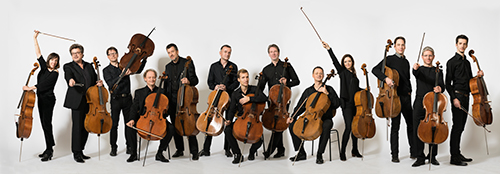
And it is undoubtedly true that without Piazzolla we would think only of sentimental clichés each time that we heard the word »tango« – lovesick glances and roses clasped between the dancer’s teeth. It required Piazzolla to reveal the infinite possibilities concealed within the tango’s world of expression, and this was possible only because he was at home in the most disparate styles. The son of Italian parents, he was born in Argentina in 1921 but he and his family emigrated to New York in 1924. There his homesick father would spend his entire day listening to tangos. By the time that Piazzolla returned to Buenos Aires in 1937, this style was in his blood, although the great loves of his musical life were jazz and the works of Bach.
Only gradually did he devote himself to the tango, playing the bandoneón in bars and nightclubs, while seeing his future in contemporary classical music. Thanks to the intermediary of Artur Rubinstein he became a composition student of Alberto Ginastera and then moved to Paris to study with Nadia Boulanger. In his memoirs he has left a graphic account of his showing the legendary teacher »my kilos of symphonies and sonatas«. They were »well written,« she declared, here a bit of Stravinsky, there a bit of Bartók and Ravel, »but I can’t find Piazzolla in this«. Finally she forced the intimidated Piazzolla to admit that he was really a nightclub musician. When he played her his tangos, it was clear to her that here was the real Piazzolla.
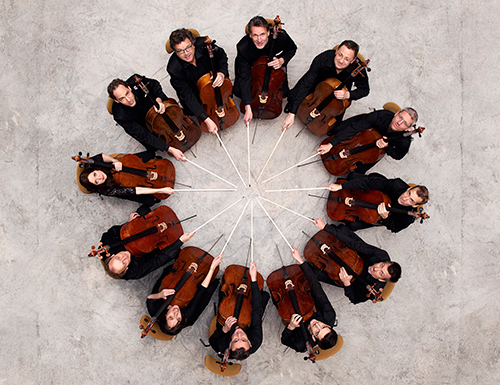
Asked how to identify a good musician, Martin Menking replies: »Unlike the less good ones, he has his own distinctive musical language, he doesn’t sound like anyone else but he is it.« Piazzolla’s hallmark is just such a powerful individuality, and the same is true of his tango nuevo. The novelty of the tango nuevo lies in the fact that it does not simply repeat the same tired patterns and rhythms. Everything is possible, every experiment, every merger with other styles.
In this sense Piazzolla’s most famous work, his Libertango, may be regarded as a kind of confession of his faith. Its title combines the words libertad (freedom) and tango and in that way celebrates its release from the traditional tango. It features all of the energy and passion that we expect from a tango but it also contains an infinite variety of subtle nuances. This music soars, but it is also lively, mysterious and ingratiating by turns – an emotional world tour within the narrowest conceivable confines.
Or listen to the way in which Piazzolla explores the hackneyed theme of loneliness in Soledad: the nostalgic theme emerges from the vague and tentative opening bars before blending with dissonant sound-surfaces and never descending into sentimentality. Rarely has the pain of loneliness been as genuinely captured in music as it is here.
In general, Piazzolla’s concern is real life unfiltered by any distorting lens. Time and again it breaks out of his music. In Buenos Aires hora cero, for example, we hear the noises of the metropolis at night, including the sirens of the emergency services, creating an atmospheric portrait that comes close to a symphonic poem. Of particular interest in this context is the prominent role that Piazzolla accords to language, which he often reproduces in his music, resulting in a quite astonishing effect, whereby real people actually seem to set foot on the stage. Duo de amor starts with a recitative for the two lovers and creates the impression of a dialogue right up to its final bars.
In Lunfardo Piazzolla even admitted that his theme was language or, to be more exact, the Lunfardo dialect of the capital’s immigrants, a dialect which, like the tango, is the product of a subculture. In addition to his major themes, all of which were grounded in society, Piazzolla also described his own experiences in his music.
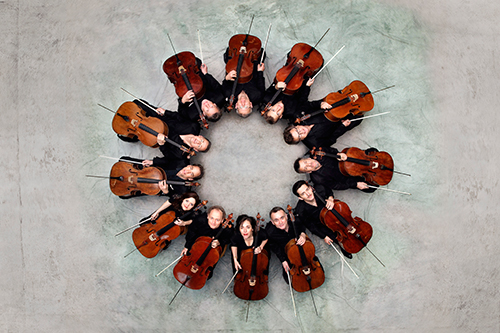
Escualo (The Shark) is one such case: here the enthusiastic fisherman captures his encounters and struggles with a shark in music that is mordant in the extreme. In Pedro y Pedro he has created a very personal tribute to two bandoneón players, Pedro Maffai and Pedro Laurenz. This music never seems studied but appears to spring from the moment, so that the emotions that it expresses are all the more authentic in consequence.
An echo of unvarnished reality and innovative sounds and noises – these are modern concepts, of course, and they reflect Piazzolla’s original desire to become a leading composer of serious music. In the case of the present album, his ambitions in this regard are illustrated most clearly by Tres minutos con la realidad (Three Minutes with Reality), the title of which could almost be a motto for the style of Piazzolla’s tangos in general. It should be mentioned that Piazzolla wrote this work after hearing Bartók’s Second Violin Concerto, and it may also be possible to hear in it an echo of the archaic rhythms of Stravinsky’s The Rite of Spring. But Piazzolla is no longer an imitator, as he had been during his youth. The solid foundations of his style provided him with the strength that he needed to confront his great colleagues with the self-assurance of an equal.
We may ask ourselves where simple enjoyment is to be found in all this. After all, Piazzolla said of himself that he loved pleasure, a good wine and life in general. Did he never write a piece of music that is light-hearted from first to last? The answer is no. Revirado (Mad) may begin by striking a high-spirited note, but its central section speaks, rather, of desolation, reflecting the sort of contrast familiar from Brahms’s Hungarian Dances. And the same is true of Caliente, the very title of which conjures up the notions of heat, liveliness and sexual excitement. All of these qualities resonate in the opening bars of this tango, before – almost predictably – a mood of depression descends.
Calambre (Pride) starts off by striking a note of self-assurance in keeping with its title, but such pride is flawed, leading to an increasing loss of balance, and is clearly just a front. In Decarismo – a tribute to the violinist, bandleader and composer Julio De Caro – the situation is reversed, the melancholy brooding of the opening giving way to an almost optimistic boisterousness. Nowhere in Piazzolla’s music will we find an unambiguous and, therefore, two-dimensional feeling.
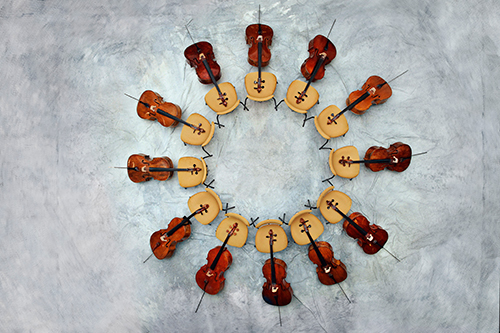
Piazzolla died in 1992, but the tango lives on not only in the style that he reinvigorated but also in its traditional form. This point is well illustrated by the present album. A representative of the younger generation of Argentine composers is Pasquale Stafano who, like Piazzolla, has made his mark with his imaginative fusion of tango and jazz.
José Carli offers us two Argentine character studies: first, a Diquera (the word means a provocative woman) and, second, a portrait of the tango pianist Para Osvaldo Tarantino, which also includes a wonderfully nostalgic reminiscence of the older type of tango. Among its most prominent exponents is Horacio Salgán, a contemporary of Piazzolla, who is represented here by arguably his most famous composition, A Don Agustín Bardi.
Piazzolla inspired not only a later generation of tango composers but also legions of arrangers. Anyone looking for arrangements of Libertango, for example, will stumble upon the most incredible interpretations: from Grace Jones to a Japanese ukulele duo, no stone has been left unturned. An arrangement of Piazzolla’s compositions for cello ensemble is a relatively obvious idea since the timbre of Piazzolla’s instrument, the bandoneón, is not very different from that of the cello.
In spite of this, arranging this music for cellos turned out to be a Herculean task, as David Riniker explains: »I didn’t have the music for most of these pieces but copied them out by repeatedly listening to recordings, with the result that it sometimes took several months to prepare a single arrangement. During the most intensive period, the work would whirl round in my head day and night. Sometimes I would dream about it. And sometimes the solution to a particular problem was clear to me by the following morning.«
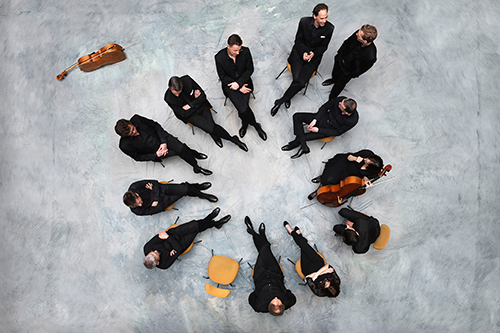
Also of importance is the fact that these arrangements were not prepared for any anonymous cellists but for a particular ensemble. Each part is written with a specific player in mind and reflects his or her predilections and abilities. This process, too, is time-consuming, but it takes full advantage of the potential of the 12 Cellists. David Riniker was all the more delighted, therefore, when Bruno Delepelaire became the orchestra’s principal cellist in 2013, for here is a musician whose technical gifts seem boundless. It was for him that Riniker wrote the virtuoso solo in Tres minutos con la realidad.
Only one conclusion can be drawn from the fact that the 12 Cellists are willing to make such an effort: their love of the tango is at least as great as it was when they first discovered it. And what is the reason for their enthusiasm? A comment by Ludwig Quandt may provide an answer: »Your average tango lasts between three and six minutes, so it’s a fairly short piece. Why is it, then, that it gives the impression of constituting a world of its own? Is it the power of its themes, some of which consist of only a few notes? Is it the harmonic writing, with its powerful and sometimes abrupt shifts? Is it the contrast between lyricism and motoric rhythms, between stasis and breakneck speeds, between love and hopelessness? The only possible answer is this: yes, it is all of these things and more – it is life in all its richness.«
Credits:
- Liner notes: Tobias Möller
- Translation: texthouse
- Content-Manager: Mathieu Kuttler
- Photo 1: Peter Adamik
- Photo 2-5: Uwe Arens




